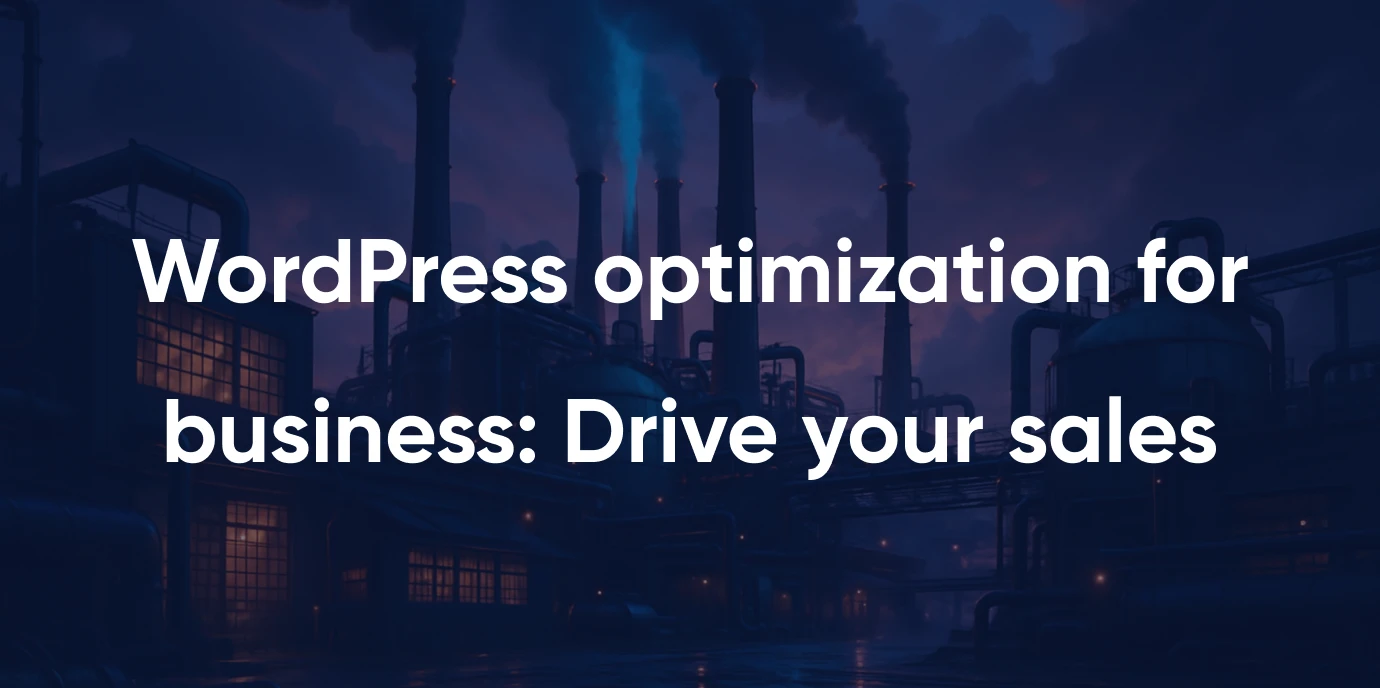WordPress for Business: Why Optimization Drives Performance and Sales
Most business sites don’t fail dramatically; they just feel a bit… heavy. A second here, a pause there, and your visitor is gone. Real WordPress optimization fixes that, and it shows up on the P&L: more traffic from SEO, higher conversion rate, better return on ad spend.
What optimization really means
It’s broader than a pretty PageSpeed Insights score. Think WordPress performance (server, caching, TTFB), clean front-end, and content that’s easy to crawl. When Core Web Vitals—LCP/INP/CLS—stabilise on mobile, bounce drops and people actually finish what they came to do.
A quick health check you can do today
Open your site on 4G and try to buy or enquire. Where do you hesitate?
Now confirm with data:
- PSI/CrUX for LCP, INP, CLS (mobile first).
- Server basics: PHP 8.2/8.3, HTTP/2 or HTTP/3, persistent object cache, CDN on.
- GA4 events in place (lead form, add-to-cart, checkout steps).
Speed that moves the needle
Server & caching. Fix the origin before tweaking pixels. A light infrastructure audit, OPcache on, and smart caching in WordPress (page + object) will cut TTFB dramatically—without breaking logged-in areas or checkout. When comparing independent WordPress speed optimization services, prioritise providers who prove gains with RUM data, not just lab scores.
Assets & code. Ship less JavaScript. Defer non-critical scripts, generate critical CSS, and split bundles so the first paint arrives fast. Self-host fonts and preconnect where needed.
Media. Images are the usual culprit. Automate image optimization with responsive sizes and WebP/AVIF, add lazy loading, compress video, and serve posters so players don’t block rendering.
WooCommerce: where speed equals revenue
- Catalogue & cart. Slim heavy queries, control cart fragments, and get ready for HPOS for smoother concurrency.
- Search & filters. Use indexed search and faceted navigation that’s fast on mobile.
- Checkout optimization. Fewer fields, instant validation, Apple/Google Pay, minimal third-party scripts. These small changes often lift CR and AOV more than any redesign.
SEO that compounds over time
Fast pages crawl better. Map a simple information architecture, use internal linking, tidy slugs, and add schema (Product, Article, FAQ). Avoid render-blocking embeds on key landing pages; your rankings (and users) will thank you.
Prove it or remove it
Set KPIs up front: LCP, INP, TTFB, conversion rate, revenue per session. Track with GA4 and a lightweight RUM dashboard. Run disciplined A/B testing: one hypothesis, enough traffic, clear decision rules. Keep what wins, bin the rest.
Myths that quietly cost money
- “A higher score guarantees speed.” Scores guide; real users decide.
- “Plugins are the problem.” Some are; many aren’t—measure before blaming.
- “AMP is required.” Modern optimization beats one-off formats for most businesses.
A practical 30/60/90-day plan
- Days 0–30: audit hosting, enable HTTP/3, fix caching/CDN, automate images.
- Days 31–60: defer JS, add critical CSS, template clean-up, stabilise Core Web Vitals.
- Days 61–90: WooCommerce checkout and search tuning, SEO/internal links, alerts and monitoring.
Bottom line
Optimization isn’t a trick; it’s an operating habit. Start with the server, cut what users don’t need, make every interaction fast on mobile, and measure relentlessly. Do that, and your WordPress site won’t just feel quicker—it will sell more.
Read Also CaponeCard Credit Cards: Benefits, Features, and FAQs











